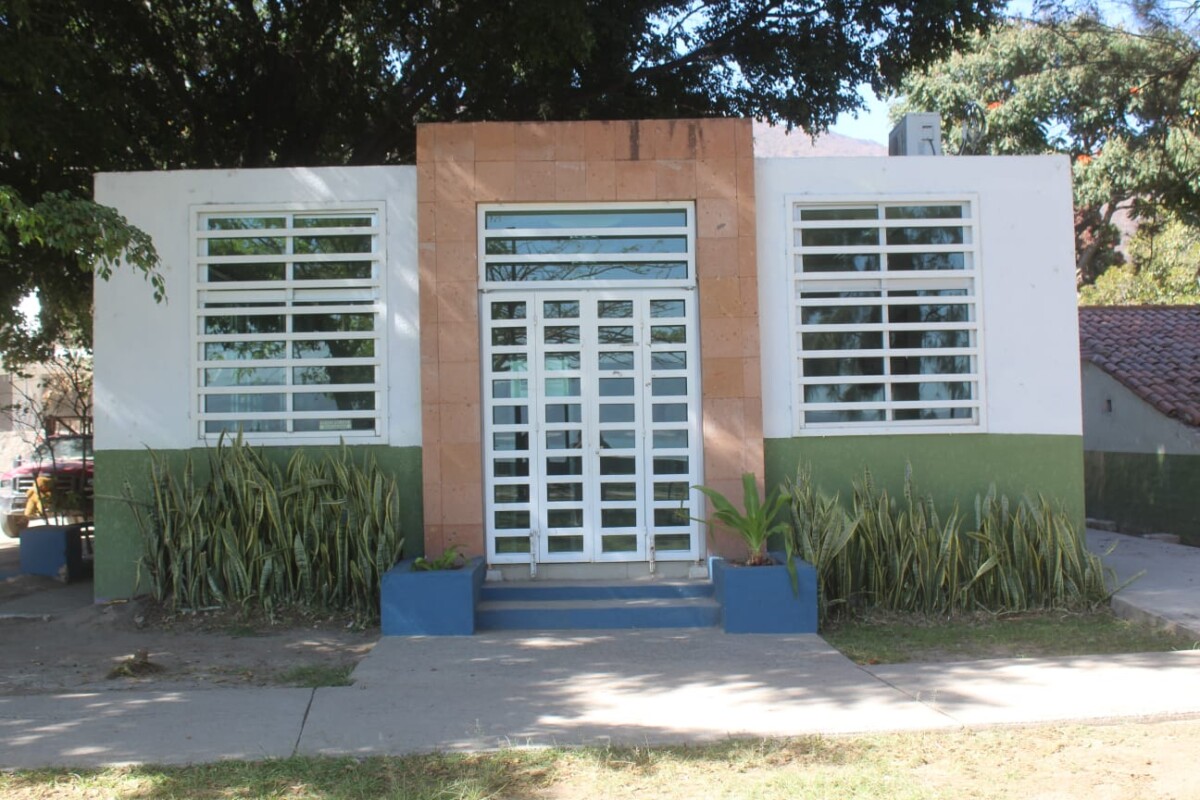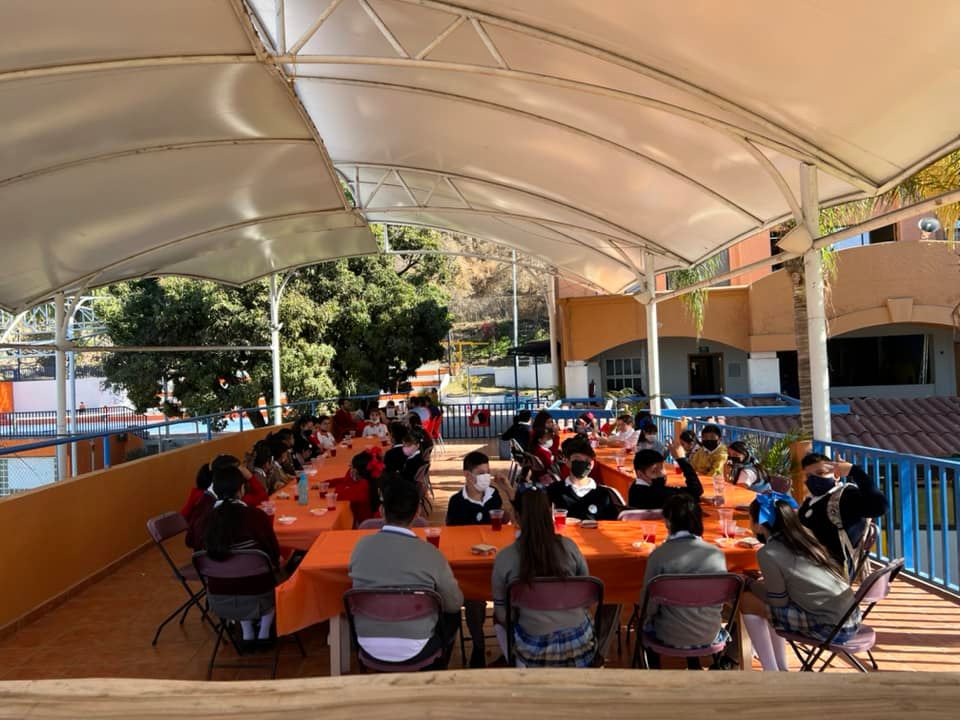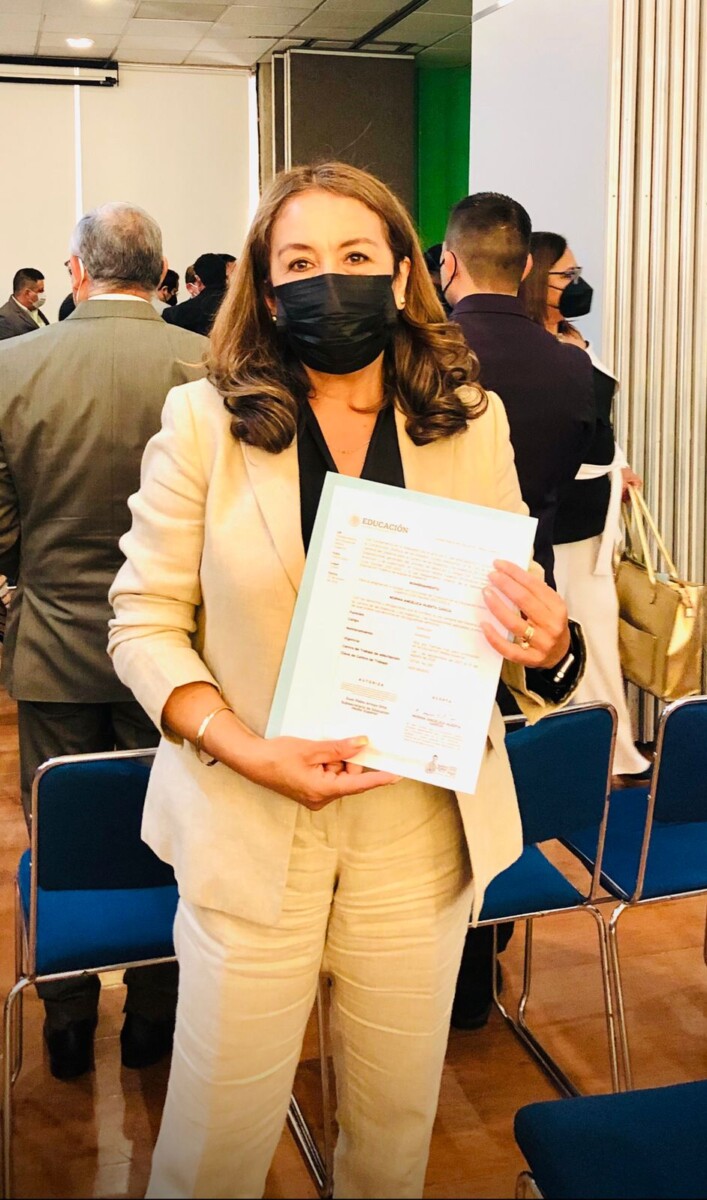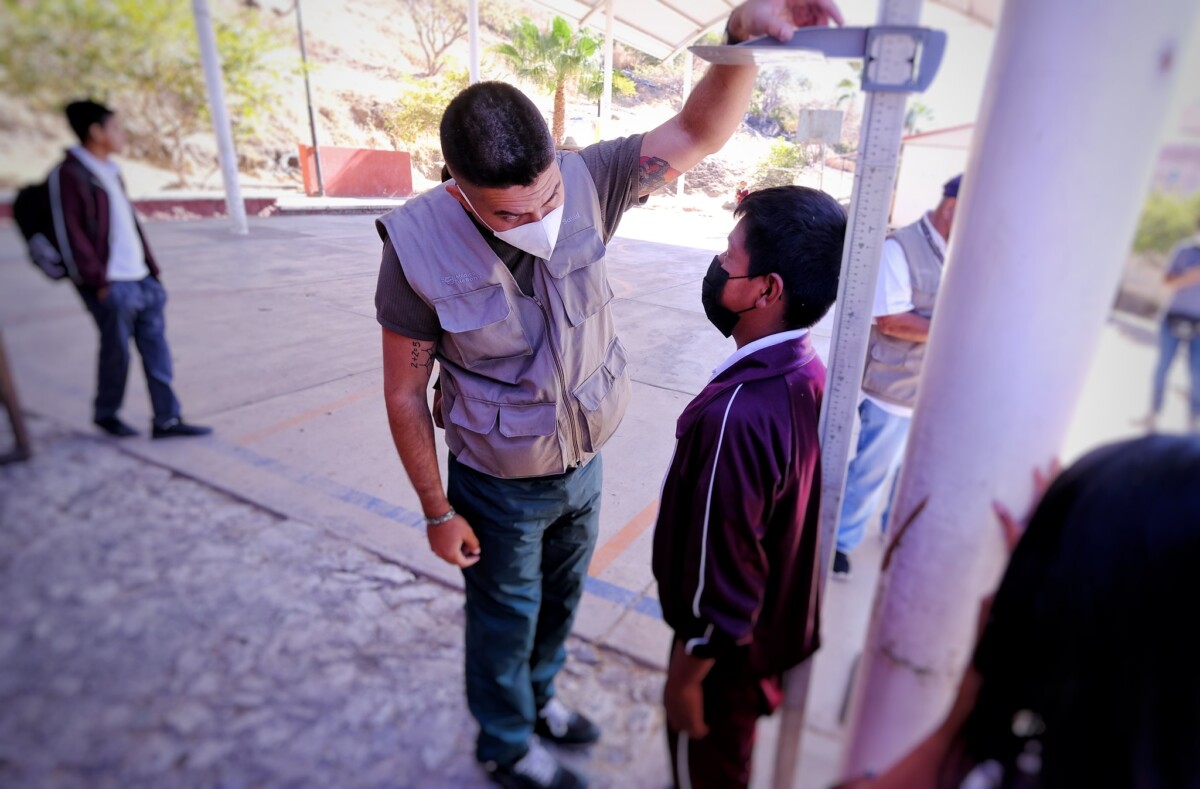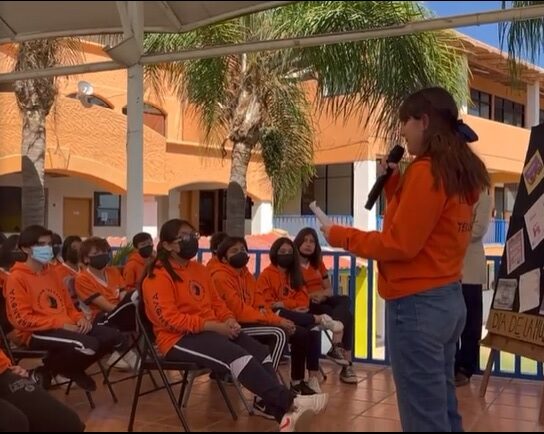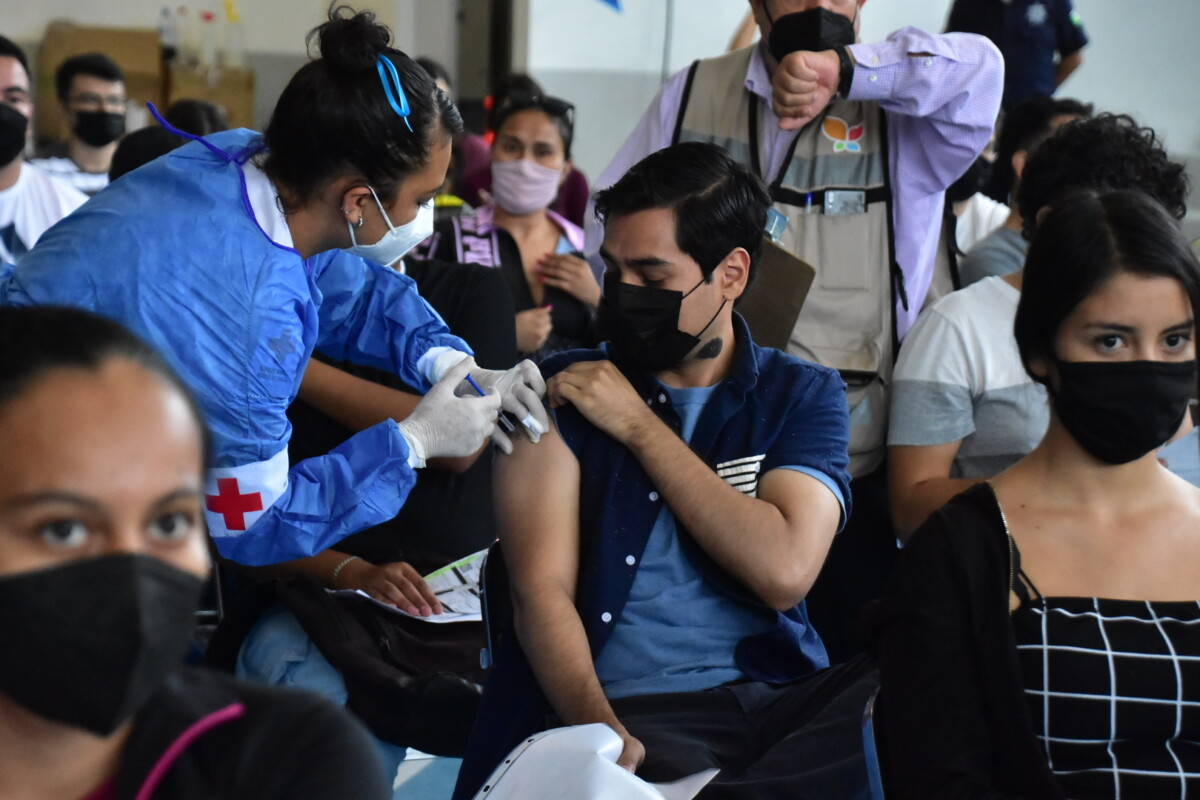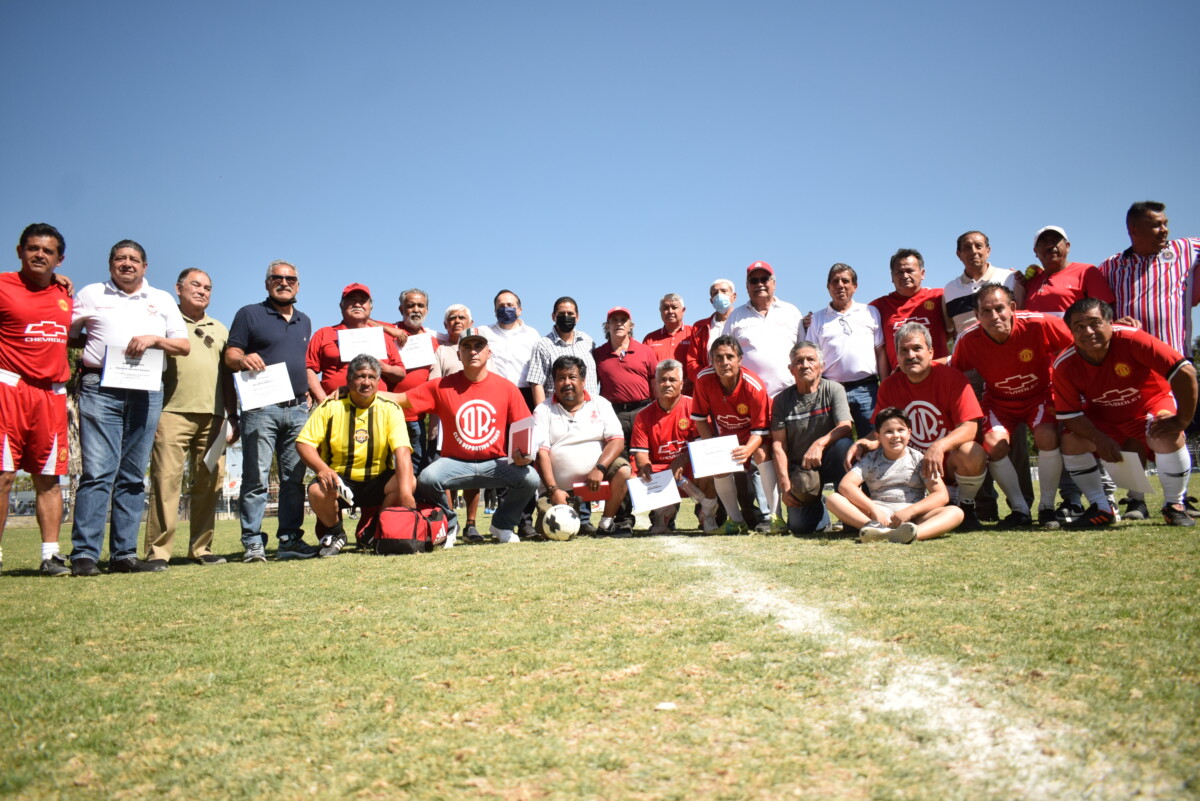educacion
Local student wins state math tournament
Jhaneiva Sinahi Mondragón Morales won first place in the LIMATEJ tournament in school zone 96. Photo: Alma Serrano.
Alma Serrano (San Juan Cosalá).- Ten-year-old Jhaneiva Sinahi Mondragón Morales, a student from San Juan Cosalá, won first place in the Jalisco State Mathematics League competition. The fifth grade student stood out in the math skills tournament held on March 23 at the facilities of the Terranova Institute, located in Ajijic. Fifty-two fifth and sixth grade children competed in two categories of 26 students each. All study in school zone 96, which includes schools from Chapala to the El Chante delegation in Jocotepec.
Sinahi Mondragón earned the highest score of the day and will represent her zone in a regional tournament, the date and place of which have not yet been defined.
Sinahi Mondragón is a student at Escuela Primaria Urbana, 699 Ignacio Zaragoza, San Juan Cosalá.
Translated by Elisabeth Shields
Promoting the use of Ajijic’s virtual library
Ajijic’s virtual library, located in the delegation’s Parque de la Amistad. Photo: Sofía Medeles.
Sofía Medeles (Ajijic).- Despite being in operation, Ajijic’s virtual library, located in the Parque de la Amistad on the boardwalk, is underutilized, which is why Ajijic’s delegate, Maximiano Macías Arceo, will seek to improve its facilities to increase the number of users.
Macías Arceo commented that both the building and the computer equipment, despite having been in service since 2015, are in good condition and work well. The printer does not work, and this has been reported to the systems department of the municipality for review.
«We will try to give it a higher priority, since it is used by young people who attend to do their homework. There are very few cyber cafes in town, and this space makes it easier for them to do their activities, in addition to the fact that it is free,» he added.
The virtual library is open from 9am to 3pm, and on some occasions, it is open later in the afternoon. The computers have internet to conduct research on the web and submit work to student platforms.
The five delegations and the municipal seat of Chapala each have libraries, of which four were inaugurated in 2015, in the administration of then president Joaquín Huerta Barrios.
The investment was over 23 million pesos (about US$115,000) and the National Council of Science and Technology (CONACYT) awarded the federal project to three municipalities in Jalisco: Tlajomulco de Zúñiga, Zapopan and Chapala.
Each module has 21 desktop computers with a 23.6-inch touch screen, Windows 8 operating system and Internet service.
Translated by Sandy Britton
Terranova Institute hosts LIMATEJ mathematics test
At least 58 students from public and private elementary schools took the test. Photo courtesy.
Editor.- The Terranova Institute recently hosted the 2022 math skills test of the Jalisco State Mathematics League (LIMATEJ) tournament for elementary school children from school zone 96.
Fifty-eight students from public and private schools took the two-hour test on Wednesday, March 23. One student, Ángela López de la Cerda, solved the test in only 20 minutes. She will represent Terranova in the regional finals.
The tournament, promoted by the Ministry of Education of Jalisco, was held in Terranova Institute’s facilities.
Translated by Mike Rogers
Health and Wellness:
By Leticia Trejo
It is understood that Yoga (as a system) or Yoga (as a discipline) is a technique that works body, mind and spirit. But, if we place this practice as only another method of physical activity, it is misunderstood by some. In fact, the practice of asanas (postures) is only one of the eight steps to achieve the benefits and the connection of these three elements that make up our earthly identity.
The Philosopher Patanjali (whom I already mentioned in a previous publication) generated the methodology of the eight arms of Yoga to achieve liberation, that is, the cessation of suffering, and to achieve the joy of transcendence; that is, that there are no longer obstacles in our mind or in our body to feel one with the creator (or universe, or this Being or Entity that surrounds us and covers us with its love). All this may sound a little subjective, but when we review what are those eight arms or eight stages, we realize that it makes perfect sense and that, whoever could practice Yoga in that order, with consistency and discipline will enjoy all its benefits.
- Yamas are the ethical and moral precepts of self-observation to realize how is our relationship with our fellow men, with the environment and with animals and nature. What is asked to practice in the Yamas? Ahimsa, which is NON-violence; Satya, which is truth; Asteya, to act with honesty; Brahamacharya, which is moderation; and Aparigraha, to live with what we generate by ourselves without accepting gifts seen as shortcuts. If we think about it well, it is clear that one of the great conflicts and obstacles to be happy is to have family problems, conflicts between neighbors, to hate animals or to mistreat nature, which generates sorrows in the mind and in the heart.
- Niyamas are the ethical and moral precepts of self-observation towards the relationship we have with ourselves. What is asked to practice in the Niyamas? Saucha, which is the purity of intention from the moment a thought crosses our mind until it becomes action; Santosa, contentment or gratitude, knowing that we are privileged for the fact of being alive and feeling; Tapas, prudence, to live knowing that each decision affects the course of our destiny; Svadhyaya, study of the self, all our life while we grow and mature learn to know ourselves with honesty; Isvara pranidhana, dedication of our work and gifts to a superior Being, to the Universe or to something beyond us.
- Asanas are a series of physical postures where the intention is the purification or constant detoxification of the body, to enjoy health and vitality and to be able to overcome adversities with a strong and flexible body.
This is how we can observe that before the physical practice, which traps many people, there are two vital steps to free our mind from obstacles generated by itself and the lack of knowledge we have of its activities. In the next edition we will continue listing the steps of this millenary system full of clear and specific processes to improve our physical, mental and spiritual health.
Translated by Christalle Dalsted
Digestive Disorders
By Lety Trejo
When we don’t have the right information, it’s difficult to give the body what it needs to work properly. For example, one of the most important components for the well-being of the digestive system is found in microbiota, which used to be known as intestinal flora. Microorganisms, such as bacteria, archaea, aukaryotes and viruses, are present throughout our bodies, so it’s important to clarify that we’re talking about intestinal microbiota. Our second brain, the intestines, depends on a balance of these compounds to separate nutrients in the food we eat from the waste they generate.
A healthy intestinal environment is key to prevention of many diseases, including mental health. For example, saturated fats help increase microbial populations associated with obesity. In contrast, foods rich in insoluble fiber such as vegetables, whole-grain bread and seeds, boost the growth of beneficial bacteria that may help you lose weight. This is according to research in the journal Gut and Liver. Research conducted at the University of Zaragoza shows these microorganisms regulate the levels of serotonin, a neurotransmitter related to our mood. Higher production of serotonin can improve our feeling of well-being.
If you want to maintain a healthy microbiota, stay away from three types of foods:
Industrial pastries have too much vegetable fat, combined with low quality flours.
Ice cream also has too much vegetable fat, as well as too many additives that provide a creamy texture. This category includes mayonnaise from the supermarket.
Artificial sweeteners, particularly those with aspartame, which has been proven to alter insulin resistance and damage the kidneys.
It would be impossible to cut our close relationship with these foods, so I advise you to do it:
Gradually + with constancy + with a lot of patience.
The best way to take care of the digestive system is to know that we are whole beings. The mind affects the body and the body affects the mind. Both affect the way we connect with the universe, with our fellow persons and with ourselves.
Don’t see a nutritionist with the idea of losing weight or looking less fat – that’s superficial. Instead, talk with a nutritionist about how to have healthier intestines and produce more serotonin for a more positive emotional state. Have a great weekend.
Translated by Mike Rogers
Norma Huerta is officially appointed Director of CETAC 01 in Jocotepec
Norma Angélica Huerta García, 52, is the new director of CETAC 01 after receiving her appointment last February 21. Photo: Courtesy
Héctor Ruiz Mejía (Jocotepec).- After almost five months in the position, Dr. Norma Angélica Huerta García received her official appointment as the director of the Center for Technological Studies in Continental Waters of Jocotepec (CETAC 01).
Huerta, 52 years old with more than 21 years of experience in the educational field, received her appointment along with 233 other directors of schools in 30 states of the country, on February 21 in Mexico City.
The new director has a degree in chemistry, as well as a master’s and doctorate in education. In an interview, she reiterated her commitment to young people in educational matters, assuring that they will always be the school’s priority.
«As an educational institution, our commitment is to provide the community with quality education, promoting the transformation of society; we will always promote learning excellence,» she said.
Huerta added that the academic commitment will be focused on the new trends of the educational system such as the New Mexican School, with a technological approach implemented in education.
The appointments of the 233 directors were delivered by Guillermo Antonio Solís Sánchez, head of the General Directorate of Agricultural Technological Education and Marine Sciences (DGETAyCM), for the period from September 1, 2021 to August 31, 2025.
Translated by Christalle Dalsted
Médico de Barrio realiza tamizaje renal en Agua Caliente, Poncitlán
El primer tamizaje se realizó en 70 niños de la Telesecundaria Adolfo López Mateos. Foto: SSJ.
Redacción.- La Secretaría de Salud Jalisco (SSJ), a través del programa Médico de Barrio, realizó el pasado 23 de marzo 70 tamizajes para detectar cualquier grado de daño renal en estudiantes de la Telesecundaria “Adolfo López Mateos”, ubicada en la delegación ribereña de Agua Caliente, municipio de Poncitlán.
Próximamente también se analizarán 400 muestras de orina en niñas y niños de preescolar y primaria de la misma localidad.
El tamizaje es una de las acciones que lleva a cabo la dependencia como parte de la atención a la salud en comunidades prioritarias asentadas en la cuenca del Río Santiago, dentro del plan integral del Gobierno del Estado.
Actualmente “estamos llevando la detección temprana de Enfermedad Renal Crónica (ERC) en el municipio de Poncitlán, específicamente en la Ribera de Chapala”, explicó el jefe del Departamento de Epidemiología de la SSJ, Cesar Augusto Domínguez Barbosa.
Los especialistas que integran las brigadas de Médico de Barrio tomaron muestra de orina, y midieron peso y talla del alumnado de los tres grados de la telesecundaria ubicada en Agua Caliente.
“Esta visita (miércoles 23) es una continuación del trabajo que se viene realizando desde hace meses, se está llevando en esta detección; ya se han visitado prácticamente todas las localidades de la Ribera de Chapala pertenecientes a Poncitlán”, apuntó.
El polígono que se interviene en esta demarcación integra las localidades de Mezcala, San Pedro Itzicán, Agua Caliente, Chalpicote y Zapotera, en todas ellas se han realizado tamizaje dirigido a escolares del nivel preescolar, primaria y secundaria. La meta establecida para esta demarcación es de hacer tamizaje a 5 mil escolares en la actual etapa.
“Con esta muestra de orina lo que hacemos es identificar si existen proteínas en ella que nos pueden marcar la sospecha de que existe inflamación en los riñones, a partir de esa sospecha nosotros podemos estudiar de manera complementaria al escolar y a partir de ello determinar su riesgo de que desarrollar Enfermedad Renal Crónica”, indicó el jefe del Departamento de Epidemiología.
El médico comentó que el alumno o alumna en quien se identifique alguna alteración con base en los resultados del examen general de orina, será sujeto a una segunda etapa de estudio que incluye la toma de muestra de sangre y la atención con el nefrólogo pediatra que se encuentra en el Centro de Salud de San Pedro Itzicán, para completar su análisis y determinar el diagnóstico final. Todos los servicios, dijo, son gratuitos.
Como parte integral de la atención a la salud de la población que vive en el polígono inmediato al Río Santiago, desde 2019 el Gobierno del Estado otorga a los habitantes de estas localidades orientación nutricional, prevención de la salud bucal, prevención, detección y promoción de enfermedades, como diabetes, hipertensión, entre otras.
El equipo de Médico de Barrio es conformado por especialistas en odontología, nutrición, psicólogos, trabajadores sociales y médicos, quienes visitan casa por casa, otorgando consultas médicas integrales principalmente en localidades de alta marginación del estado.
Terranova Institute commemorates International Women’s Day
Terranova Institute students commemorated International Women’s Day by sharing examples and opinions regarding the violence they suffer throughout the country. Screen copy.
D.Arturo Ortega (Chapala).- Students stood on the terrace of the Terra Nova Institute demanding the respect that is due them from a society that has owed them since the beginning of time.
Student, Julieta Ortega spoke of the cases of Renata from Oaxaca, Karina from Chiapas and a 14-year-old girl from Jalisco who were all victims of femicide.
«What fear, what rage, what terror! I am sick of living in a place from which I leave my home, but to return is a privilege. I leave with little hope of returning — not only me, but my friends, my teachers, my mother and my sister,» said the outraged high school student.
The young woman shared the results of a 2021 report where the national authorities reviewed 275 cases of femicide and macho violence examining the reason for the irrational hatred of one gender towards the other. Forty-eight percent of the aggressors committed violence because the victim did not want to have sex, and the other 52 percent because the woman disobeyed. This type of violence against women afflicts all 32 states of Mexico.
Julieta reflected: «they are killing us for being women, and every day we suffer intimidation, harassment, threats, resignation, silence and fear.» She said these are reasons not to “celebrate” International Women’s Day but to march to be respected, valued, heard, and to fight against hatred, violence, lack of equity and justice towards the female gender.
«If they kill me and if they find me, this body marked by violence will be the hands that remove the blindfold from people’s eyes. And if they kill me and if they find me, may my death give strength to raise my voice, to remove the ropes from the mouths of my sisters who are still there,» were the poetic words with which Julieta concluded her message.
Terranova Institute celebrated International Women’s Day with conferences, reflections and denunciations from its students.Also present at the meeting were special guests Anabel Lechuga and Erika de la Cerda. The photographer, María Di Paola, gave a presentation of the history of achievements and examples of courageous women whose contribution and sacrifice have allowed us to reach the moment we live in.
Translated by Nita Rudy
Buena respuesta de jóvenes para acudir por refuerzo contra COVID-19
Tan solo en la semana pasada más de 170 mil jóvenes de 18 a 29 años fueron vacunados en Jalisco. Foto: Cortesía.
Redacción.- La Secretaría de Salud Jalisco (SSJ) reportó una buena respuesta del grupo de jóvenes de 18 a 29 años para acudir por el refuerzo de la vacuna contra COVID-19. La semana pasada la mayoría de las más de 173 mil dosis aplicadas en módulos metropolitanos o habilitados en municipios del interior de Jalisco correspondieron a este grupo.
Si bien la tendencia de contagios y hospitalizaciones continúa a la baja, y todas las actividades económicas, sociales, culturales y recreativas se reanudaron ya al 100 por ciento, la SSJ destacó que es importante contar con el esquema completo de vacunación y además aplicarse el refuerzo, debido a que la pandemia aún no ha terminado
Debido a ello, a partir de mañana arrancan jornadas para cubrir a todas las personas mayores de 18 años con refuerzos; segundas dosis -si ya les corresponde por fecha- y oportunidad para primera dosis a quienes aún no se han aplicado ninguna vacuna. Asimismo se suministrarán primeras y segundas dosis para adolescentes, de acuerdo con los lineamientos que marca el Gobierno federal: 12 a 14 años con comorbilidades y de 15 a 17 años en general (incluidos los de 14 que cumplan 15 este año).
Durante la semana epidemiológica 11 del presente año, que fue del 13 al 19 de marzo, se suministraron 173 mil 786 vacunas; de las cuales 155 mil 358 recibieron la vacuna de los laboratorios AstraZeneca (refuerzos, segundas y primeras dosis en mayores de edad).
En el mismo periodo se suministraron además 16 mil 344 dosis de laboratorios Pfizer-BioNTech (para adolescentes), 1 mil 848 de Moderna (para segundas dosis), 160 de Cansino (para primeras dosis de personas rezagadas) y 76 del laboratorio Sinovac (para segundas dosis pendientes).
CORTE SEMANAL
De acuerdo con datos de la SSJ, en Jalisco, durante la semana epidemiológica 11 de este año se registraron 2 mil 807 contagios nuevos (2 mil 543 casos nuevos menos respecto a los reportados la semana anterior), para un acumulado al 19 de marzo de 579 mil 069 personas contagiadas. Se reportaron además 57 defunciones, para un total de 19 mil 153 muertes registradas en lo que va de la pandemia hasta el pasado día 19.
Former players of Redes Chapala recognized on their anniversary
The veteran team of Sports Club Redes Chapala with recognition in hand, minutes before the start of their last friendly match against El Chapala. Photo: Jazmín Stengel.
Jazmín Stengel (Chapala).- A team with history. Club Deportivo Redes celebrated its 62nd anniversary in style and with a dedication to Othón Rayo, an outstanding sports promoter in Chapala.
Former and veteran players were recognized by the Government of Chapala.
With the mariachi Águila and three friendly matches, Juan José Rayo Castro, Othón’s son and current manager of the club, praised those present on February 28, as he does every year, with the aim of not letting the tradition die that his grandfather Juan Rayo Suárez started in 1960 and later inherited from his father, Othón Rayo.
Municipal President Alejandro de Jesús Aguirre Curiel also joined in the celebration and presented awards to the most representative players in the club’s 62-year history, such as Mario Sánchez, Rafael Rayo, Nano Sánchez, Luis Ayala, Manuel Huerta, Kiko Camarena, Salvador ‘El Chato’ Chavoya, and goalkeeper Humberto ‘The Spider’ Reyes, among others who were present.
After the presentation of awards, Alejandro Aguirre kicked off the first match, in which the veterans of the ‘El Chapala’ team faced each other. It is worth mentioning that many of the members lived in Los Angeles, California, where they founded a second club under the name of Redes Chapala.
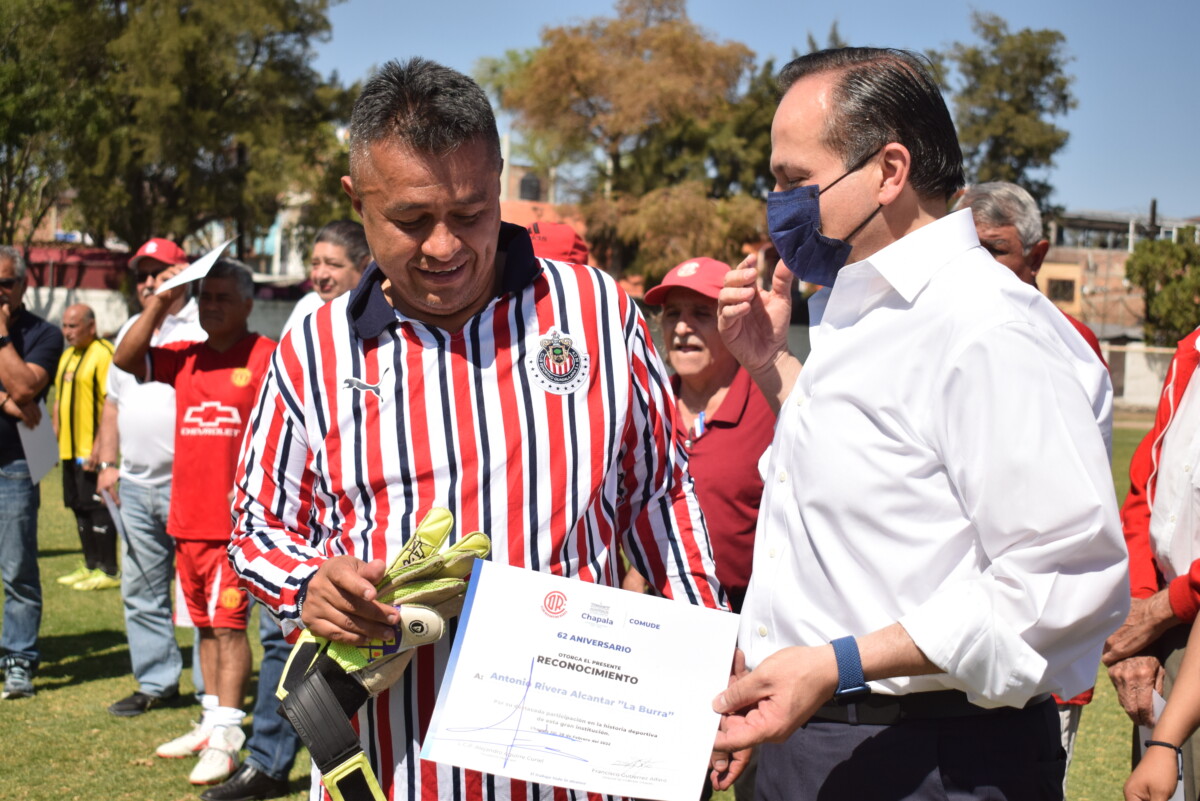
Arturo Rivera Alcantar received his recognition from municipal president Alejandro de Jesús Aguirre Curiel. Photo: Jazmín Stengel.
In the second match, the B division of Club Redes played against the champions of Chapala, Niños Santos. To give way to the stellar match against the Chapala pre-selection for the Jalisco Cup 2022, who demonstrated their level with a 4-0 win. «They are twice our age,» commented Juanito, a Redes director, who explained that in addition to being ten years older than the other players, the club only plays in the local area.
Compared to before, in 1974 they won against Chivas de Guadalajara 2-0, recalls Mario Sanchez, who scored both goals when he was only 17 years old at the time. Or the tour of the United States in 1991, when Reyes Oliveros was the president of the California Soccer League.
Around the 1970s, they counted on the presence of Evelio Ortiza, Brazilian, and Antonio Olivera, Costa Rican, foreign coaches of first and second division who pushed the team to the professional reserves.
«Many said that Redes was for snobs, but I am proof that this is not so. It was for those of us who wanted to grow up,» denied Antonio Mendoza, proud bearer of the number 13 during the first decades of the club’s trajectory.
Over the years and thanks to the initiative of Jesús Cabrera Jiménez, during his 2010-2012 administration, the current third division club Charales de Chapala was founded, supported by the best former players of Club Deportivo Redes as coaching staff.
Translated by Elizabeth Shields
© 2016. Todos los derechos reservados. Semanario de la Ribera de Chapala

